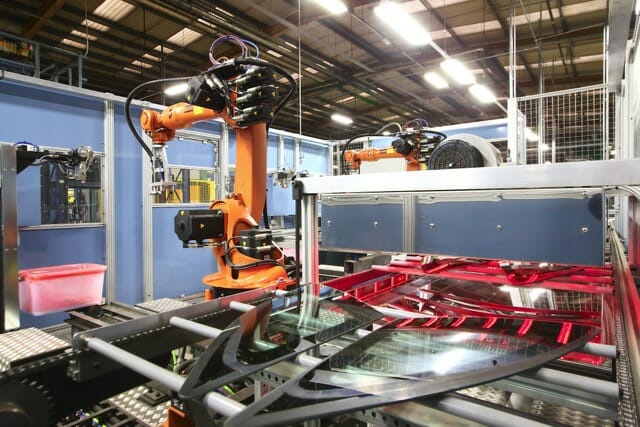The application of heat is an important stage of many areas of the engineering and process sectors. This can range from curing of adhesives and paints, assistance in plastics forming and lamination, browning of food toppings, prevention of thermal shock during hot filling of bottles and jars even the heating of metal tool moulds. There are many other manufacturing processes where heat is used and often this heat needs to be applied selectively and in a targeted fashion. This can often be achieved most efficiently and cost-effectively using infra red heating.
Infra-red heating is one of the most energy-efficient and versatile mechanisms of heat transfer, as the energy contained in infra-red emission is converted into heat only when it is absorbed by the object to be heated. As a result all the heat is transferred directly and there is no heating up of the surrounding environment. And, as infra-red heaters have very little warm-up times, their fast response means that heat is applied only when required. In addition, infra-red emitters can be contoured to match the form of the object to be heated, so that heat can be produced in a targeted fashion exactly where it is needed, in terms of focus, size and spectrum.
Flexibility in application
As well as its versatility as a heat source, infra-red is also extremely flexible in its application. Infra-red emitters are very compact and can be easily integrated, and retrofitted, within automated production lines. A particular example of this is the use of infra-red within robotic cells and a fast response medium wave (FRMW) infra-red heating system from Heraeus Noblelight has been integrated precisely within such cells at Dura Automotive Systems of Castle Bromwich to ensure the reliable and precise adhesion of molded thermoplastic sealings to custom-designed, automotive glass windows.
Dura Automotive Systems is a global operation, employing over 12,000 people, with its headquarters in the USA. It is the world’s leading independent designer and manufacturer of driver control systems, seating control systems, safety hardware, structural body systems, exterior trim and integrated glass systems..
Its factory at Castle Bromwich specialises in automotive structures, glass and trim solutions. When it was awarded an important contract by a major British car maker to produce quarter lights featuring a molded sealing around the edges, Dura contacted Bauromat (UK) Ltd a recognised leader in robot manufacturing cells. Consequently, a cell featuring two Kuka robots was installed to carry out the delicate operation of applying a prime adhesive coating to the quarter glass to allow a molded seal to be affixed in a subsequent operation. However to ensure ideal adhesion of the molded seal to the prime coating it was necessary to heat the coating to a specified temperature to achieve the required cure and “tackiness” before the glass is precisely over-molded in a further operation.
Infra-red was considered to provide the best solution to this problem. Unlike a warm air oven, an infra-red system takes up very little space, can be precisely controlled to synchronise with the robot operations and is very energy-efficient. Tests were carried out at Heraeus Noblelight’s Applications Centre in Neston, Wirral, and these proved so successful that a 24 kW Carbon medium infra red (CIR) system was installed in the robot manufacturing cell. This is designed to heat one large item of glass or two smaller ones, according to production requirements and is Pyrometer controlled to maintain a set coating surface temperature.
According to Oli Lebrun, the project engineer at Dura, “The infra-red system fits perfectly into the cell manufacturing cycle and we have an additional energy-saving bonus, as the fast response of the emitters means that heat is applied only when required.”
Conclusion
Infra-red is possibly the most versatile and flexible of all heating techniques. It is energy-efficient and ovens have a small footprint. It is easy to control and can be easily retrofitted in existing installations. It is now being increasingly specified throughout the manufacturing and process sectors, where systems can be designed to cater for variable process and product requirements.





